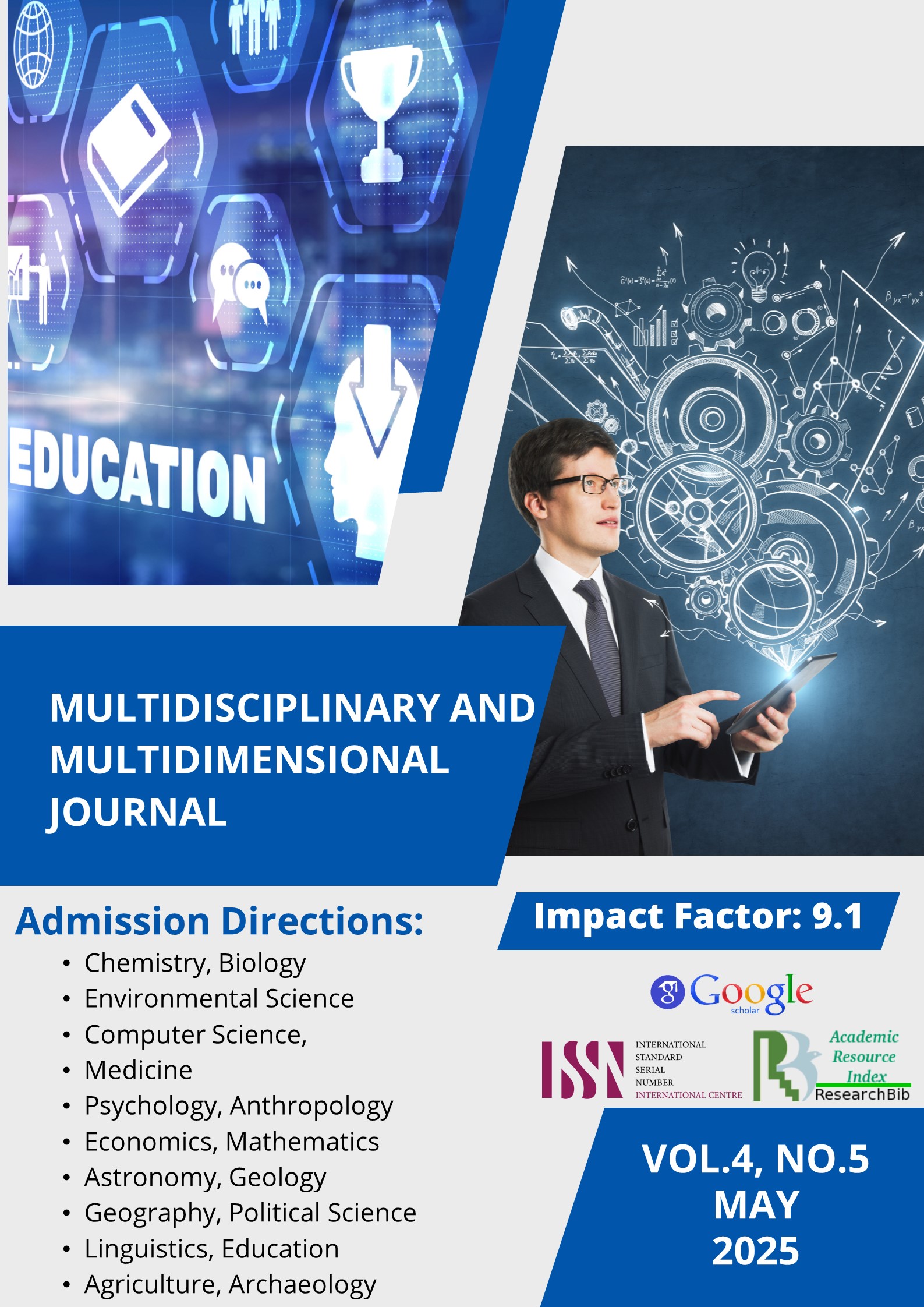RELIGIOUS PLACE NAMES AS REPRESENTATIVES OF LINGUISTIC WORLD PICTURE ON EXAMPLES OF UZBEKISTAN
Abstract
This article explores religious place names in Uzbekistan as linguistic representations of the cultural and spiritual worldview of Uzbek-speaking communities. Drawing on the theoretical framework of the linguistic world picture and employing methods from linguocultural and cognitive linguistics, the study analyzes how sacred concepts are embedded in toponyms through metaphor, historical reference, and cultural symbolism. A corpus of over 100 religious place names was compiled from official dictionaries, historical records, and ethnographic sources, with particular focus on names containing honorifics and religious terms such as hazrat, bobo, imam, and nur.
The findings reveal that these names function not only as geographic identifiers but also as cognitive and cultural markers that reflect ancestral reverence, divine presence, and collective religious memory. Conceptual metaphors such as LIGHT IS DIVINITY and ANCESTORS ARE GUARDIANS structure the way sacred space is linguistically perceived. Regional variation in naming patterns highlights the influence of historical religious traditions and local linguistic practices. Furthermore, the study demonstrates how religious toponyms contribute to national identity formation and heritage preservation in contemporary Uzbekistan.
By examining religious place names through a multidisciplinary lens, this research contributes to a deeper understanding of the relationship between language, belief, and spatial cognition in the context of Uzbek culture.
References
Apresyan, Y. D. (1995). Image of the world through language. Moscow: Languages of Russian Culture.
Assmann, J. (2011). Cultural memory and early civilization: Writing, remembrance, and political imagination. Cambridge University Press.
Halbwachs, M. (1992). On collective memory (L. A. Coser, Ed. & Trans.). University of Chicago Press. (Original work published 1950)
Karimova, N., & Soliyev, M. (2021). Ziyorat tourism and toponymic heritage in Uzbekistan. Central Asian Cultural Studies, 9(2), 112–124.
Krasnykh, V. V. (2002). Ethnopsycholinguistics and cultural linguistics: An essay on the interaction of language and culture. Moscow: Gnosis.
Lakoff, G., & Johnson, M. (1980). Metaphors we live by. University of Chicago Press.
Mirzaev, Z. (2014). Diniy toponimlar tarixi va etnografiyasi [History and ethnography of religious toponyms]. Tashkent: Fan.
Nazirova, G. (2018). O‘zbekiston diniy toponimlari: Semantik tahlil [Religious toponyms of Uzbekistan: Semantic analysis]. Philological Studies Journal, 2(1), 45–53.
Rakhmonov, A. (2015). Diniy atamalar asosida toponimlarning semantik xususiyatlari [Semantic features of toponyms based on religious terms]. Tillar va Adabiyotlar, (3), 23–29.
Superanskaya, A. V. (1973). General toponymy [Общая топонимия]. Moscow: Nauka.
Tursunov, A. (2017). Toponimika va madaniyat [Toponymy and culture]. Tashkent: Akademnashr.
Wierzbicka, A. (1992). Semantics, culture, and cognition: Universal human concepts in culture-specific configurations. Oxford University Press.
Yuldashev, A. (2020). Diniy toponimlarning etimologik va metaforik tahlili [Etymological and metaphorical analysis of religious toponyms]. Uzbek Journal of Language Studies, (4), 55–66.











